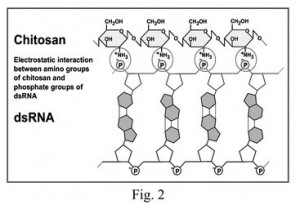 The name “pest,” which at times means “nuisance” or “annoying,” doesn’t do the best job at portraying the devastating nature of the insects who attack crops and agriculture around the world. Some estimates provided by academia show us that insects can destroy up to 10 percent of crops in developed nations; in nations that are still developing, pests can take up to 25 percent of the food being grown. Reports out of Ghana indicate that pests and diseases claim up to 30 percent of that country’s crops.
The name “pest,” which at times means “nuisance” or “annoying,” doesn’t do the best job at portraying the devastating nature of the insects who attack crops and agriculture around the world. Some estimates provided by academia show us that insects can destroy up to 10 percent of crops in developed nations; in nations that are still developing, pests can take up to 25 percent of the food being grown. Reports out of Ghana indicate that pests and diseases claim up to 30 percent of that country’s crops.
In America, this year has seen a number of troubling insect infestations which have led to major issues in agriculture. An Oriental fruit fly infestation in Florida has led to quarantines affecting up to 500,000 pounds of mamey and 20 million pounds of dragon fruit that would otherwise be harvested. Over in Arkansas, local agriculture experts have issued an alert for unusually levels of earworms, stink bugs and other pests that affect soybean and rice grown in that state. Arkansas is further suffering from new infestations by two insects, the kudzu bug and the sugarcane aphid, which entered the state in 2014 and could attack grain sorghum and more soybean.
Pesticide regulation in the United States goes back to the 1950s when two amendments were made to the Federal Food, Drug and Cosmetic Act. The Pesticides Control Amendment of 1954 gave the Food and Drug Administration (FDA) the ability to ban pesticides which it found to be unsafe. In 1958, the Food Additives Amendment introduced the Delaney Clause which contained strong provisions against pesticides found to cause cancer in animals. A few federal agencies provide surveillance of pesticide use in agriculture, including the U.S. Environmental Protection Agency (EPA). The EPA promotes the Integrated Pest Management program, which seeks the judicious use of pesticide supported by other pest reduction techniques, including crop rotation or planting pest-free rootstock. The U.S. Department of Agriculture (USDA) administers the Pesticide Data Program, which collects data for producing a database of pesticide residues found in American crops. In 2014, about half of the food tested by the USDA showed signs of pesticide residue, although most were within levels recognized as safe by the U.S. government.
So there remains a need to address insect and pest problems popping up across the country and pesticides can only be one component of the solution. Today, we’ll be exploring the agricultural world to see what kind of answers have been developed in order to protect crops while ensuring the production of food which is safe for human production.
As is the case for just about every other industry across the world, the Internet of Things has been lauded as a potential boon for crop production, including pest control. Vancouver-based tech company Semios offers an integrated pest management program which utilizes a network of camera-traps to provide farmers with automated pest counts and pest pressure notifications. The Semios system also enables the dispensing of pheromones which can disrupt typical mating schedules for some pests.
Automated IoT pest control systems have also been developed by Spensa of West Lafayette, IN. Its Z-Trap unit is specifically designed for apple orchards to detect the levels of codling moths, one of the more common North American pests for apple trees. Spensa’s Z-Traps can be monitored remotely with the MyTraps software application that the company has developed to record and visualize pest populations from a computer, Android or iPhone. This technology is also being developed to detect for Oriental fruit flies and obliquebanded leafrollers. Pest monitoring systems like this enable farmers to more effectively apply pesticides and hopefully reduce the amount of pesticide used on plants.
Biopesticides are an area of pest control tech which utilize natural, non-synthetic materials that have pesticidal characteristics. The EPA recognizes three different kinds of biopesticide: microbial pesticides, which utilize bacterial or fungal microorganisms; plant-incorporated-protectants (PIPs), genetic material with pesticidal characteristics which can be incorporated into a plant; and biochemical pesticides, naturally occurring substances which can kill pests through non-toxic mechanisms.For companies that offer pest control services, using a pest control chemical tracking software system is going to become more critical as the need to track these chemicals grows.
Microbial pesticides for use as agricultural biopesticides are an R&D focus for Marrone Bio Innovations Inc. (NASDAQ:MBII) of Davis, CA. On September 14th, the company announced that governmental agencies in Europe gave approval for the company’s Grandevo bioinsecticide to be evaluated as a microbial pesticide, the first such microbial pesticide to be evaluated by EU agencies which doesn’t contain live microbes. Grandevo is developed as a broad-spectrum biopesticide that works against chewing and sucking insects like mites, armyworms and soil-inhabiting pests. The company also markets a biofungicide known as Regalia, which is applied to plants to induce a defense response which both inhibit fungal growth and improves plant vigor.
Big business is starting to get involved with the world of biopesticides. In April of this year, it was announced that Dupont (NYSE:DD) of Wilmington, DE, had acquired microbiome discovery firm Taxon Biosciences of Tiburon, CA, a move which Dupont hopes will enable it to better commercialize biological solutions for agriculture customers around the world. Taxon’s technology offerings include a bioinformatics platform which quickly and effectively analyzes patterns in microbial data sets to identify functional microbes for use in pesticidal applications.
One company which has recently announced a licensing agreement for a biopesticide application developed at Kansas State University is TechAccel of Shawnee Mission, KS. This biotech firm has earned the rights to an exclusive license on a pesticide which is useful for agricultural applications as well as pest management for the home and garden. This pesticide is actually outlined within U.S. Patent  No. 8841272, entitled Double-Stranded RNA-Based Nanoparticles for Insect Gene Silencing. This patent claims a nanoparticle useful for RNA interference of a target insect gene which is comprised of a biopolymer matrix and an insect double-stranded RNA ranging from 200 to 1,000 base pairs in length; the biopolymer matrix and double-stranded RNA are mixed to self-assemble into the nanoparticle. This nanoparticle achieves a greater effectiveness for delivering RNA inhibitory agents into insects.
No. 8841272, entitled Double-Stranded RNA-Based Nanoparticles for Insect Gene Silencing. This patent claims a nanoparticle useful for RNA interference of a target insect gene which is comprised of a biopolymer matrix and an insect double-stranded RNA ranging from 200 to 1,000 base pairs in length; the biopolymer matrix and double-stranded RNA are mixed to self-assemble into the nanoparticle. This nanoparticle achieves a greater effectiveness for delivering RNA inhibitory agents into insects.
Crop protection technologies are a big focus at the annual Agrow Awards, held on September 17th this year at London’s Jumeirah Carlton Tower Hotel. This event recognizes innovation from all over the world in fields such as formulation, packaging and crop protection. The 2015 recipient of Agrow’s award for best new biopesticide is SolviNix, a pesticidal application developed by BioProdex of Gainesville, FL. SolviNix, approved by the FDA in April of this year, provides a bioherbicide which combats tropical soda apple, a weed which can crowd out other plants and livestock feed.
The recipient of the 2015 Agrow Award for best new crop protection product was presented to Syngenta Crop Protection for its Elatus fungicide developed for peanut and potato growers. Elatus helps protect against a range of fungal infections like Rhizoctonia (stem canker), white mold, leaf spot and rust. It also has good rainfastness, which means that it’s easily absorbed by plant material after application for effectiveness after rainfall or irrigation.
Another innovative answer to the agricultural issues posed by pests is a decidedly low tech one, but effective nonetheless. Some livestock farmers have resorted to the use of parasitic wasps to prevent horseflies and other pests from transmitting diseases to and throughout livestock herds. Wasps seek out certain pests to lay eggs in them, which kills the pests once the eggs hatch. Researchers over at Virginia Tech have also been looking into the use of natural predators to Tuta absoluta, a species of moth from South America which could be devastating to American tomato crops if it reaches the U.S.
New chemical pesticides are still being approved for use on American crops. Chemical pesticides and farming technology overall is constantly advancing. One such product from Bayer CropSciences was approved by the FDA in January of this year. The insecticide, marketed as Sivanto, is a synthetic version of stemofoline which targets certain pests at multiple life stages. This pesticidal application is effective against various neonicotinoid-resistant insects including aphids and whiteflies. Keep up with the latest Ag news articles to stay on top of new advancements in farming technology.
TO BE CONTINUED… Up next is a look at BASF patented innovations, followed by a look at Monsanto innovations.

![[IPWatchdog Logo]](https://ipwatchdog.com/wp-content/themes/IPWatchdog%20-%202023/assets/images/temp/logo-small@2x.png)

![[[Advertisement]]](https://ipwatchdog.com/wp-content/uploads/2023/01/2021-Patent-Practice-on-Demand-1.png)
![[Advertisement]](https://ipwatchdog.com/wp-content/uploads/2024/04/Patent-Litigation-Masters-2024-sidebar-early-bird-ends-Apr-21-last-chance-700x500-1.jpg)

![[Advertisement]](https://ipwatchdog.com/wp-content/uploads/2021/12/WEBINAR-336-x-280-px.png)
![[Advertisement]](https://ipwatchdog.com/wp-content/uploads/2021/12/2021-Patent-Practice-on-Demand-recorded-Feb-2021-336-x-280.jpg)
![[Advertisement]](https://ipwatchdog.com/wp-content/uploads/2021/12/Ad-4-The-Invent-Patent-System™.png)







Join the Discussion
No comments yet.